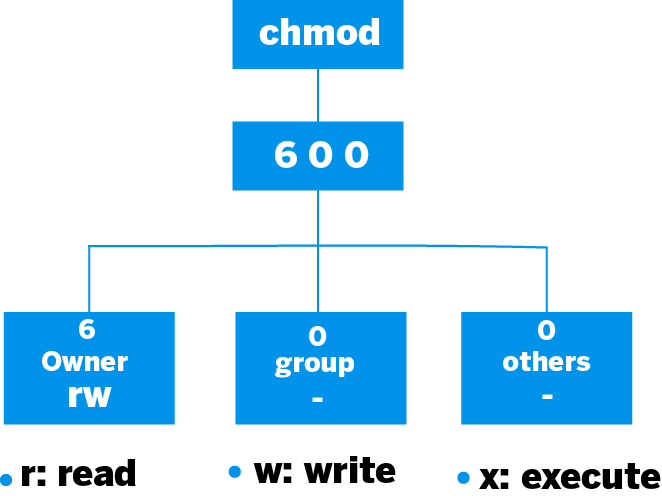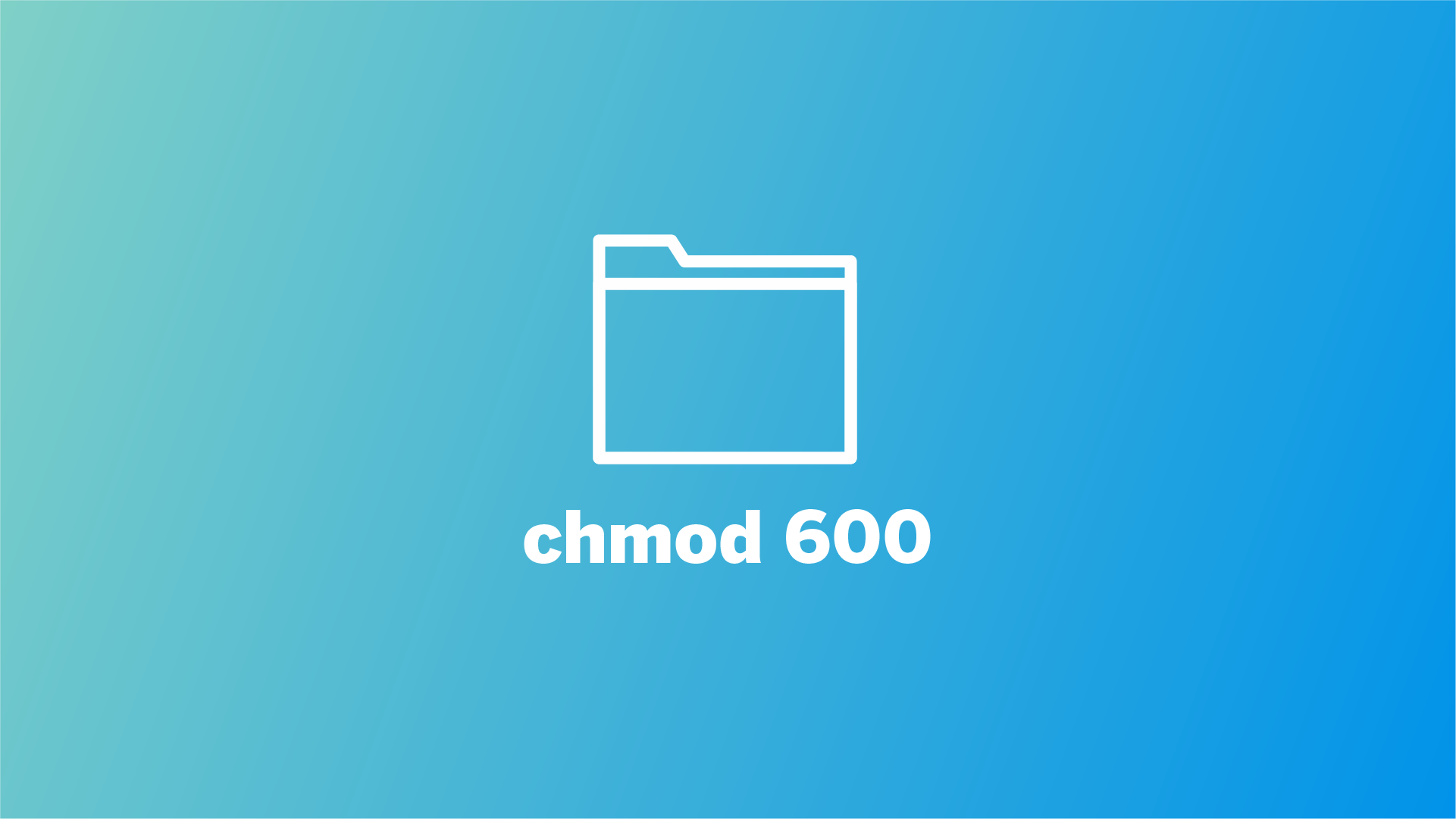chmod 600 is a file permission setting in Linux that grants read and write permissions to the owner, while denying all permissions to the group and other users.
File permission is a set of rules that define the accessibility of files and directories to different users. File permission is necessary to control access and prevent unauthorized access and modification of files and directories in Linux.
In this blog post, we will explore what chmod 600 command means, what permission is granted to different users, when you should use this command, and best practice when using chmod 600 commands in Linux.

Understanding File Permissions in Linux
In Linux, there are three types of users owner, group, and others. Each user can have a different set of permission for files. Here is a reference table of Linux user and their description.
| User | Description |
|---|---|
| Owner | The user who created and owns the file or directory. Can create, modify, or delete files. Only the owner or superuser can change file permissions. |
| Group | A group of users who share common permissions. Can have read, write, and execute permissions. |
| Others | Everyone else who is neither the owner nor a group member. Permissions are set by the owner or superuser. |
Each user in Linux can have three permission to manage the files and directories. These permissions are read, write and execute permission. Here is a reference table of permissions available in Linux and their short description.
| Permission | Symbol | Description |
|---|---|---|
| Read | r | Allows users to read, view, and download the files. |
| Write | w | Allows users to write content, create, change, append, or delete files. |
| Execute | x | Allows users to execute the files, open an application, or run a script. |
| No permission | - | Restrict users from reading, writing, or executing files or directories. |
These permissions support two representations one is a symbolic representation, and the other is a numeric representation. chmod 600 is a numeric representation of file permission. The numeric notation consists of 0 to 7 digits, each representing a different permission set. Here is the reference table of numeric notation of file permission.
| Permission Value | Binar Reprenstion (rwx) | Permission Description |
|---|---|---|
| 0 | 000 | No permissions |
| 1 | 001 | Execute permission only |
| 2 | 010 | Write permission only |
| 3 | 011 | Write and execute permissions |
| 4 | 100 | Read permission only |
| 5 | 101 | Read and execute permissions |
| 6 | 110 | Read and write permissions |
| 7 | 111 | Read, write, and execute permissions |
Now that you have learned the basics of Linux file permission let’s decode chmod 600 commands in the next section.
What Does chmod 600 Mean?
Here is an example of the chmod 600 commands.
chmod 600 myfile.txtIf you use the chmod 600 commands to set permission to the myfile.txt, where each digit of 600 represents different permission for different users.
6: Digit 6 (110) represents permission read (1) and write (1) are granted to the owner while executing (0) permission is not granted to the owner.0: Digit 0 (000) represents no permission is granted to the group.0: Digit 0 (000) represents no permission is granted to others.
In other words, chmod 600 commands allow the owner to read and write the files and directories while group members and other users cannot access the files and directories.
You can also use a symbolic equivalent to the chmod 600 command that sets exactly the same permission as chmod 600.
chmod u=rw,go-rwx myfile.txtWhen to Use chmod 600
As chmod 600 command only gives read and write permission to the owner, it is suitable for private files. Here is the two possible use case of the chmod 600 commands.
1. Protecting Confidential Documents
If you have confidential documents and you want to keep them private, then chmod 600 command is the best file permission option. This permission will allow you to read and write whiles group members and other users can’t read, modify or delete the files. This chmod 600 command helps you restrict your confidential files from unauthorized access.
2. Securing SSH key Files
If you use SSH key pair to connect to your remote VPS, you must protect your private key files from unauthorized access. Chmod 600 command allows you to keep the SSH private key only accessible to you.
Conclusion
chmod 600 file permission is well suited for confidential and private files that should be restricted from other people. If the files need to be shared with other members, you may need to change the file permission. chmod 600 command gives read and writes permission to the owner only. If you want to know further about file permission in Linux, consider reading How to Change File Permissions in Linux With chmod Command With Example.




